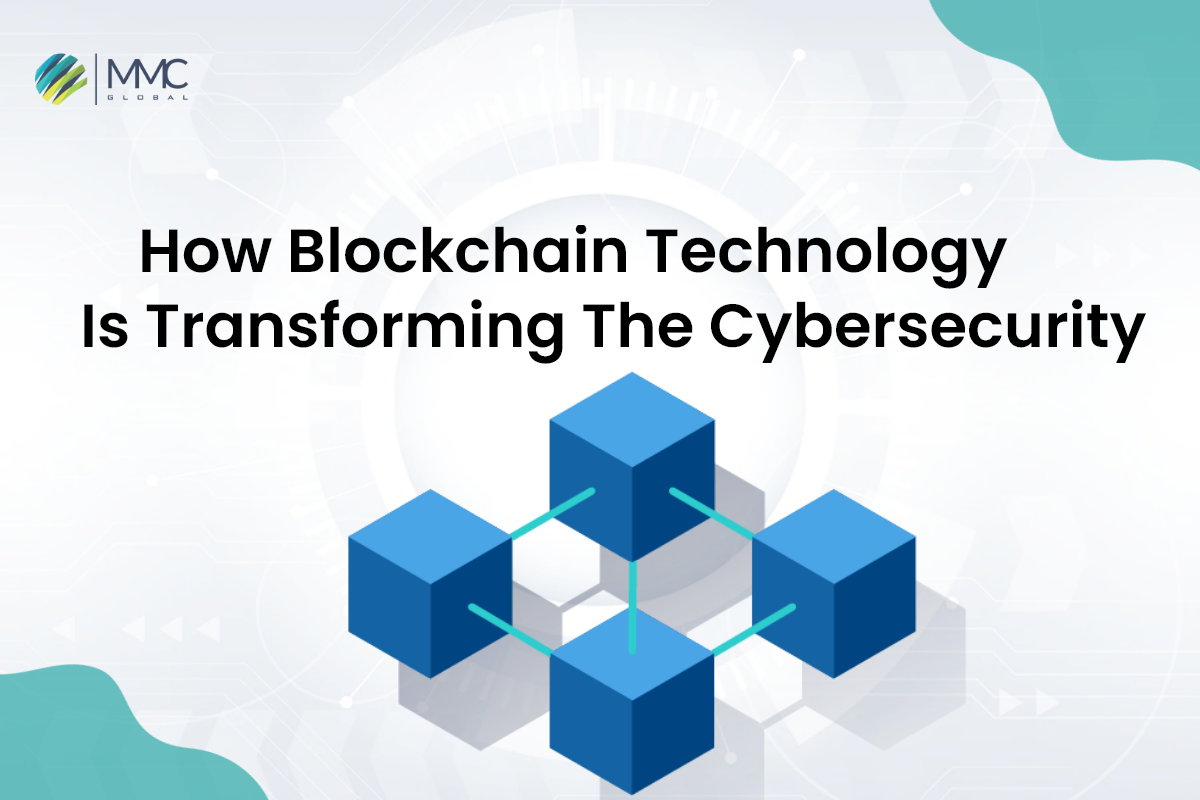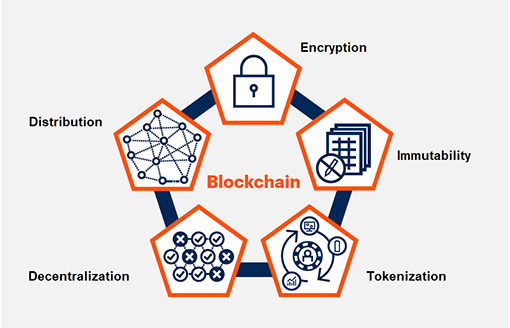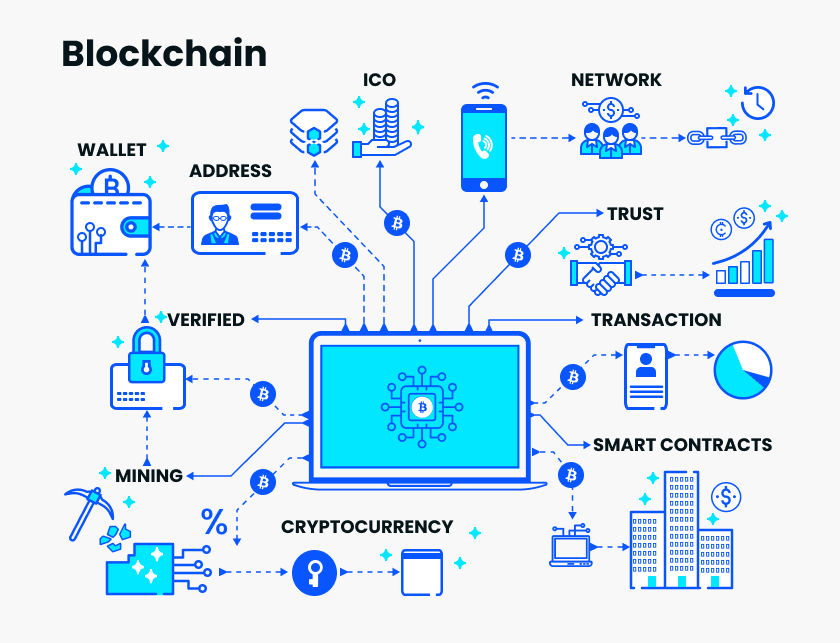How Blockchain Technology Is Transforming The Cybersecurity


How Blockchain Technology Is Transforming The Cybersecurity
Blockchain technology introduces hi-end technology for industries such as Fintech, healthcare, eCommerce, etc. Today’s businesses depend upon digitalization as it has infinite upsides for their growth, enhancement of ROI, sustainability, and resilience in business activities.
However, every story has two sides. You can not disregard the downside of technology and digitalization. Some foes are ready to cash your efforts. Technology raises the number of cybercrimes and vulnerabilities.
Blockchain technology provides a wide range of reliability and security of applications for facing these challenges. For instance, if you are serving in the banking sector, there is a high risk of hacking the personal information of your customers in their digital banking accounts. Their account details, cash flow, existing amount, etc., are at higher risk.
At MMCGBL, our developers pay more attention to this application to provide end-to-end security. With the help of blockchain application development, we aim to offer a revolutionized app that is a user-friendly, safe, and secure database.
Let’s see the fundamentals of blockchain technology and how it works for every industry.
Defining The Blockchain Technology
Blockchain technology indicates the digital ledger (or list of records) that stores data of any kind. It has a block-type structure that integrates each other with the concept of cryptography.
Cryptography is a technique that helps to secure information and communication. With the support of mathematical concepts and a set of rule-based calculations (algorithms), it transforms messages in a way that is hard to decipher.

Moreover, blockchain has three major components that are worth mentioning here:
Decentralization: Blockchain is all yours. No one can own it.
Transparency: The transparency level is too high and maintains privacy.
Immutability: No one can interfere with stored data inside the blockchain.
How Does Blockchain Technology Work?

Blockchain technology is all about securing data from unwanted people but sharing it with a willing and trusted group. Blockchain development consists of three main concepts, given below:
Blocks
Each chain has comprised of multiple blocks, and each block has three main functional components:
- The data is the block.
- The random 32-bit nonce (number only used once) generates whenever a block is created to provide encryption. As a result, it creates a block header hash.
- The hash is a 256-bit integer that is linked to the nonce. It must begin with a large number of zeroes.
Furthermore, the nonce will generate the cryptographic hash when a block creates. It indicates that the nonce locks it forever until it gets mined.
Miners
Another essential step is Miners. When the new block generates on the chain through a process called mining. Mining is complicated. Every block has its hash and nonce but refers to the preceding block’s hash.
Miners utilize custom software to handle the exceedingly complicated arithmetic challenge of generating a good hash. Because the nonce is only 32 bits long and the hash is 256 bits long, there are approximately four billion nonce-hash possibilities before determining the correct one. When this occurs, miners are said to have discovered the “golden nonce,” which adds their block to the chain.
Modifying a previous block in the chain requires re-mining. This is why manipulating blockchain technology is so tough. Consider it “safety in math” because identifying golden nonces takes time and computational power.
Nodes
Decentralization is an imperative factor in blockchain technology. A single computer or entity cannot own the chain. Conversely, it is a blockchain platform across the chain’s nodes. Nodes are electrical devices that retain backups of the blockchain.
Every node has its copy of the blockchain, and for the chain to be updated, trusted, and confirmed, the network must algorithmically approve every freshly mined block. Because blockchains are transparent, every transaction in the ledger can be easily verified and inspected. Each participant is assigned a unique alphanumeric identification number to track their transactions.
Read More: Node.js Development – A Good Choice For Real-Time Applications 2022
What are Public Chains and Private Blockchains?
Blockchains can be public or private. Anyone may engage in a public blockchain, which means they can read, write, or audit the data on the blockchain. Moreover, changing transactions is exceptionally challenging because no single authority oversees the nodes in a public blockchain.
On the other hand, a private blockchain refers to the entity of any organization or group. A private blockchain can manage only by them. It is the only one who can determine who can decipher the system. It means they have the right to go back and change the blockchain. This private blockchain technique is more analogous to an in-house data storage system, but it is spread among numerous nodes to boost security.
The report says, “the annual global spending on blockchain solutions will reach $11.7 billion by 2022.”
Use-Cases of Blockchain Technology
The use-cases of blockchain technology are becoming compulsory and rising in every industry. It encourages multiple complex operations such as securing digital accounts to ease transferring assets.
Read more: How is Blockchain App Development Helping The Business Industry Grow in 2022?
Cryptocurrency
The reason behind the emergence of blockchain technology is Cryptocurrency. The most popular blockchain application nowadays is the foundation of cryptocurrencies such as Bitcoin or Ethereum. When they purchase, swap, or spend bitcoin, users’ transactions are recorded on a blockchain. The more individuals that use cryptocurrencies, the more popular blockchain may become.
Banking Sector
In banking, Blockchain uses to conduct transactions with fiat currency, such as dollars and euros, and cryptocurrencies. Because the international banking transactions are executed from outside of typical business hours, this may be faster than sending money through a bank or other financial institution.
Assets Transfer
You can also use Blockchain technology to record and transfer ownership of various assets. It is now quite trendy with digital assets such as NFTs. NFT encourages and indicates ownership of digital art and media.
It also authenticates the tangible assets dealings that help record verifications of payments. They could use this technique to transfer the property deed without physically submitting documentation to update the local county’s official records.
Healthcare Sector
To reduce the control of hackers, cybersecurity devices use blockchain technology with medical equipment and healthcare systems. Blockchain also assists them in avoiding these sorts of hassles, which cost them a lot of money. Data is the most delicate weapon, capable of both destroying nations and favorably impacting you by making you aware of future events.
Read more: Artificial Intelligence technology in Medical & Healthcare
Supply Chain Monitoring
Supply chain monitoring was a big issue at the international level of import and export. It is extremely hard to record a wide range of goods data transferring from one corner to the other corner of the globe. Companies use blockchain technology to maintain the record and find the earlier old one that can miss in a pile.
Anything that can conceive of as a supply chain, blockchain can vastly improve its efficiency- it doesn’t matter if it’s people, numbers, data, money.
Voting with Blockchain Adancement
The government officials are eager to embed this technology that prevents voters from casting fraudulent votes after deploying blockchain technology in the voting system. There would not be the need to cast manually and any inconvenience in paper ballots.
Advantages of Blockchain Technology
- Using blockchain technology in your software or application, you can trust its security as it works on the decentralized syntax.
- It encourages you to make payments or accessible assets transfer 24/7. You don’t need to wait long days as you do manually.
- No third party can temper the system as it is only a two-way transaction process. Moreover, it saves time as there is no need for approval from any intermediaries.
- Blockchain technology offers high accuracy as it provides multiple nodes verification to confirm the blockchain transaction.
- The power of saving complex records is undeniable.
Bottom Line
Blockchain technology helps users to trust the technologies and decreases the risk of any inconvenience. Industries like the banking sector and healthcare are on the way to utilizing it to secure databases, systems, and transactions. Other sectors are also looking forward to enjoying this technology and providing their end-users encrypted security in their applications.
MMCGBL is inviting you to start your next project based on blockchain application development with our expert developers. Let’s start it today!
In this article
Toggle


